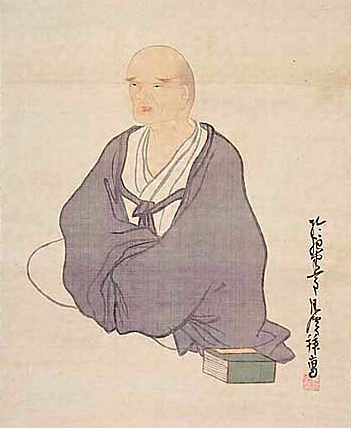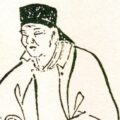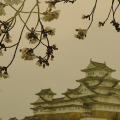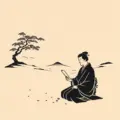
A Saijiki is a special type of traditional Japanese poetic dictionary that lists words and phrases related to the seasons, such as plants, animals, weather phenomena, and other natural elements. It helps poets find appropriate seasonal references in their writing. This is especially important for Haiku, since seasonality plays an integral role in defining its structure and meaning.
By using certain keywords from a Saijiki reference book, it becomes easier to capture the essence of nature within a Haiku poem. The use of these words also serves to enrich the language with imagery associated with specific times of year.
In this way, by consulting a Saijiki when writing haikus one can ensure that his/her poem contains allusions to seasonal events or occurrences which are essential for conveying the full scope of emotion contained in its three lines.
Contents
Is A Saijiki Essentially A Kigo Dictionary?
Essentially, yes. While individual saijiki may not be comprehensive in terms of the Kigo they describe, their purpose remains the same: to help poets find appropriate seasonal references for their Haiku.
The only reall difference, if you’re pushing for one, between a Kigo dictionary and a Saijiki is that the former contains more general terms related to seasons, while the latter contains specific words and phrases unique to Japan’s culture and climate. This means that one may not be able to find words in a Saijiki that wouldn’t be included in a Kigo dictionary.
What Is A Kiyose?
A Kiyose is a type of Saijiki which doesn’t typically contain sample poems or examples of kigo and other seasonal terms. Instead, it’s an almanac-like collection of words and phrases related to the seasons. It includes descriptions of seasonal phenomena, plants, animals, and other natural elements associated with each month or season.
While essentially the same thing, a kiyose has the benefit of listing kigo terminology without necessarily leading the poet down a specific avenue of thought.
The History of Saijiki
The origin of the Saijiki dates back centuries to Japan’s Edo period (1603-1868). During this time, poets and writers used it as a reference for seasonal words in their poetry.
Today there are many varieties of Saijiki available with different themes and formats. Some concentrate solely on natural elements such as plants or animals while others include references to cultural events, holidays, or customs associated with certain times of year. In addition to these traditional editions some publishers have released modern versions which incorporate new vocabulary related to contemporary life and technology.
Saijiki has also become more widely accessible in recent years due to digital technologies such as websites and smartphone apps that allow users to search for keywords without having an actual physical book at hand.
Additionally, online resources like forums have been created where people can discuss their thoughts on particular terms from a given dictionary or ask questions about specific expressions they don’t understand.
This has allowed for more open dialogue between students and scholars alike about the use of language within Haiku poems which ultimately helps promote greater appreciation for this important form of literature throughout Japan and around the world.
The Different Types of Saijiki
There are many types of Saijiki available for poets and writers to use when composing their work. The most common type is the seasonal Saijiki, which lists words and phrases associated with specific times of year such as spring, summer, autumn, or winter.
These reference books can be helpful for capturing the essence of nature in a Haiku poem by incorporating language related to certain seasonal events or occurrences.
Traditional Saijiki also exist and typically contain more general entries that aren’t necessarily tied to any particular season. This type of dictionary may include references about plants, animals, and other elements from nature that can be used regardless of the time period they are being written in.
Some traditional dictionaries even have sections dedicated to Japanese culture such as festivals or customs, so the poet may incorporate these details into their work if desired.
Finally there are mon-thematic Saijiki which focus on one specific theme such as birds or flowers rather than a range of topics like those covered in traditional dictionaries. These resources tend to provide more detailed information about each subject since they don’t need to spread out over multiple seasons like seasonal ones do; this makes them especially useful for anyone looking for an exhaustive list on a particular topic related to Japan’s flora and fauna.
Using Saijiki to Write Haiku
When writing Haiku, it is important to keep in mind the three essential features that define this poetic form: brevity, seasonality, and a focus on nature.
- Brevity is achieved by limiting each poem to just three lines of 17 syllables or less. This makes Haikus easy to read and allows for quick expression of ideas without getting bogged down in unnecessary details.
- Seasonality requires the use of words and phrases related to specific times of year such as spring, summer, autumn, or winter which add context to the poem’s message while also providing imagery associated with nature.
- In most haiku, particularly traditional, there is a focus on natural elements such as plants animals weather phenomena etc which are often used as metaphors throughout haikus so readers can connect with their deeper meaning through familiar images from everyday life.
Saijiki can be an invaluable tool for generating ideas for Haiku poems since these dictionaries list words and phrases related specifically to seasonal topics making them perfect resources when trying to capture the essence of nature within a few short lines.
In addition many Saijiki contain Kigo (seasonal references) which are expressions traditionally used in Haiku poetry that come from Japanese culture and history; using these helps enrich language with allusions unique only to Japan thus allowing authors create truly authentic works that speak directly about its people’s relationship with nature over time.
Using Saijiki when writing haikus ensures that one creates pieces that are both meaningful and appropriate for their genre; instead of simply describing what they see before them poets can now more easily draw upon traditional knowledge handed down through generations capturing underlying emotions connected not only with humanity but also our environment by connecting moments in time together through words found within these special dictionaries.
Conclusion
In conclusion, Saijiki can be an invaluable resource for writers looking to craft meaningful Haiku . However, they can’t be the only resource you utilise – for example, relying on a saijiki won’t necessarily help you when it comes to kireji, or other aspects of haiku.
By consulting these dictionaries one can easily find words and phrases associated with specific seasonal themes that help enrich their language and incorporate imagery from nature into their work.
Additionally, Kigo references often found in traditional Saijiki provide authors with a deeper understanding of Japanese culture which allows them to create truly authentic pieces that speak directly about its people’s relationship with nature over time.
Lastly, by using the tips outlined above such as brevity, seasonality and focusing on natural elements when writing haikus it is possible to ensure that each poem captures the full scope of emotion contained within its three lines while also conveying the beauty of Japan’s unique environment throughout all four seasons.
- Glossary of Japanese Poetry Terms - 26 February 2025
- What is Waka Poetry? - 23 May 2024
- How to Identify the Kigo in a Haiku: - 22 March 2024





